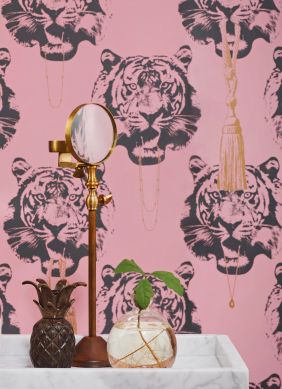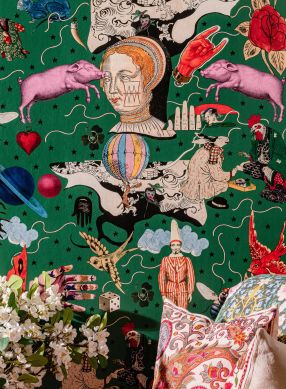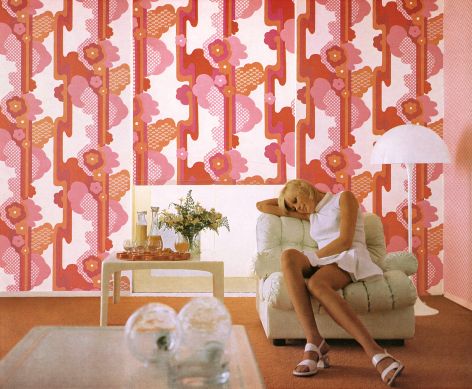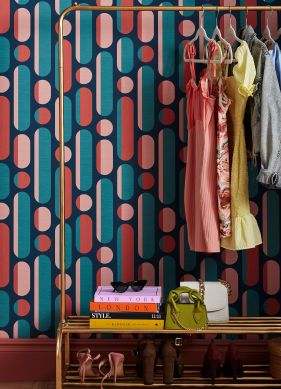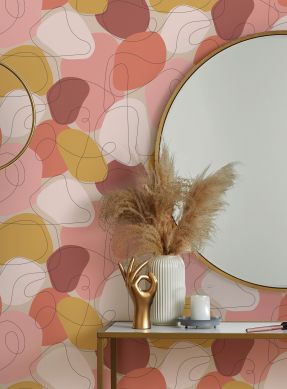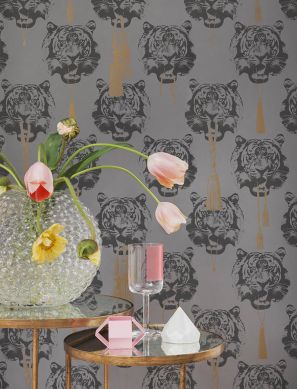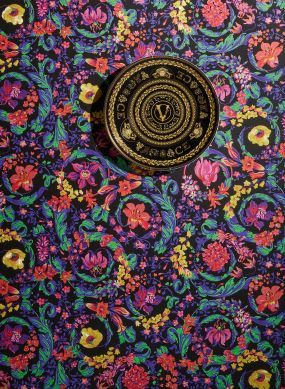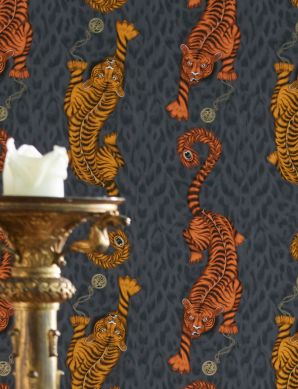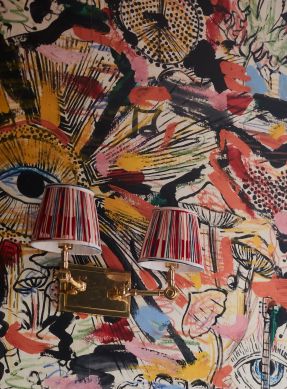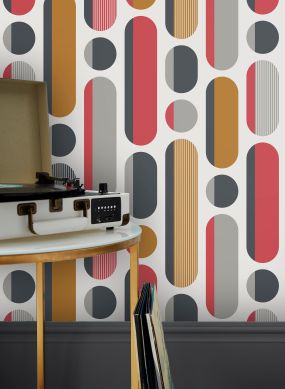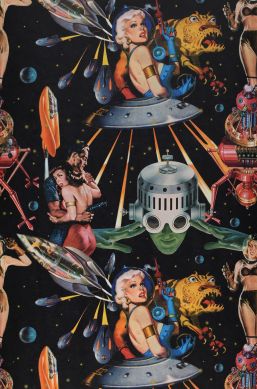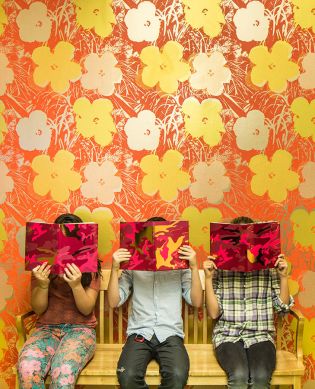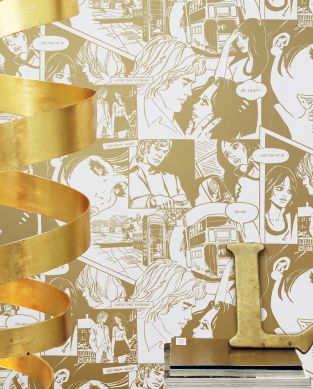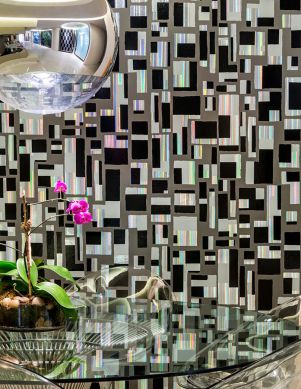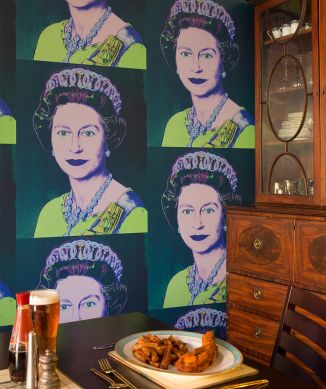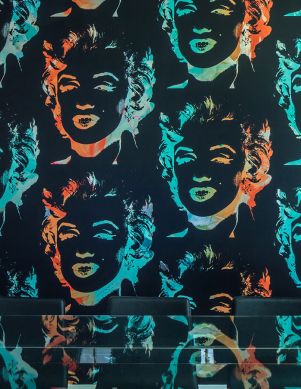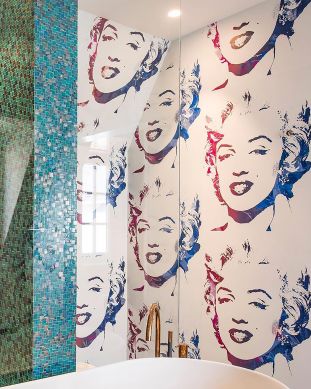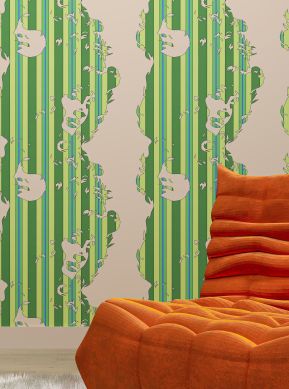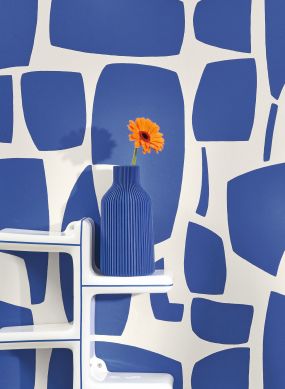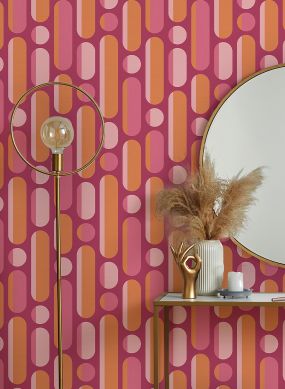Pop Art Wallpaper
Pop Art Wallpaper: The Guide
Undoubtedly the most celebrated artistic development of the 20th century, Pop Art first surfaced in the 1950s but gained traction in the 1960s as a reaction to the growing influence of consumerism, mass media, and popular culture. Drawing inspiration from everyday objects and media like newspapers, comic books, magazines, and other mundane sources, it aimed to subvert the perception of what can be considered art by rejecting the elitist principles that had dominated the art world until then. With an emphasis on graphical images and bright colours, Pop Art was an obvious choice for wallpapers. Andy Warhol himself famously produced a number of wallpaper designs, including the iconic psychedelic cow’s head in 1966. Contemporary Pop Art wall décor recaptures the rebellious spirit of its heyday with celebrated motifs from this art movement and reproduces its colourful and revolutionary style in a variety of signature models.
Table of Contents
- What defines Pop Art design?
- Who are the artists that contributed to the popularity of Pop Art?
- Which motifs are popular in Pop Art wallpapers?
- What should I keep in mind when considering Pop Art wall décor?
What defines Pop Art design?
A true revolution in the art world, Pop Art design subverted the traditional canon by appropriating images from popular culture, creating collages from a mishmash of sources and intensifying the colours to mirror advertising styles.
Iconic images from popular culture
Aiming to challenge the traditional boundaries between high art and popular culture, Pop Art artists made frequent use of images and icons from everyday media and products. This included commercial items like soup cans, photos of celebrities, newspapers, comics and even brand names and logos like Coca Cola or Campbell. The goal was to break away from the elitist art world and bring art to a wider audience.
Bright, poppy colours
Aiming to compete with other colourful and bold imagery found in popular culture, such as advertising and comic books, Pop Art used bright and poppy colours as a way for artists to create visually striking work that would grab the viewer's attention. Primary hues like red, yellow, and blue were prominent in many famous pieces, particularly in Roy Lichtenstein’s and Andy Warhol’s body of work, as a kind of commentary on the artificiality of consumer culture.
Collages and a blend of different media
Pop artists likeRobert Rauschenberg and Richard Hamilton combined images from a variety of media sources, e.g. photographs, magazine cut-outs, and advertising images, placing them onto a single canvas to create a collage. This approach quickly became a unique form of the Pop Art narrative. The goal was to challenge traditional art forms by breaking down the barriers between painting, sculpture, and printmaking.
Who are the artists that contributed to the popularity of Pop Art?
Among the many artists that contributed to the popularity of Pop Art, it is impossible not to mention Andy Warhol as the true father of the movement, along with David Hockney, Richard Hamilton and Roy Lichtenstein.
Andy Warhol
The term “Pop Art” is indelibly linked to Andy Warhol’s name, whose work has become synonymous with this style and movement. His iconic artworks, like the 32 “Campbell’s Soup Cans”, his world-famous depictions of Marilyn Monroe, and the distinctive “Death and Disaster” typified the core tenets of the Pop-Art movement: the obsession with celebrity, the repetition of images, and the use of advertising as subject matter.
David Hockney
No other Pop Art artist exemplifies its use of bright colours, bold shapes, and graphic images drawn from everyday objects like British artist David Hockney. Perhaps his most celebrated artwork, and one of the most iconic symbols of Pop Art not created by Warhol, is his series of swimming pool paintings depicted in a bright, hyper-realistic style, with bold colours and strong lines that almost transform them into a comic book fantasy.
Richard Hamilton
Considered by many as one of the founders of the British Pop Art movement, Richard Hamilton’s most important contribution is undoubtedly his collage called “Just What Is It That Makes Today's Homes So Different, So Appealing?”, features several images, including a bodybuilder, a television set, and a comic book. His technique became a standard feature in Pop Art and helped to establish the movement's focus on popular culture and everyday life.
Roy Lichtenstein
A leading figure in the Pop Art movement, Roy Lichtenstein is widely known for having introduced to the art world graphic elements previously only seen in advertisements and cartoons. His most recognisable work is “Whaam!”, depicting a fighter jet being hit by a missile. The painting’s bold outlines and bright, saturated colours, straight out of a comic book panel, became Lichtenstein's signature style.
Which motifs are popular in Pop Art wallpapers?
Pop Art revolutionised the art world by elevating common images like humble everyday objects, celebrities, and comics to icons now found on many Pop Art wallpaper models.
Advertising slogans and logos
With the arrival of TV and the ubiquitous presence of advertising, the 1960s were awash with familiar advertising slogans and logos. Pop Art artists used them in a subversive way, altering their original meaning and context to provoke a discussion about their dominant role in society. Andy Warhol's “Campbell's Soup Cans” is certainly the most famous example of this approach, and it is reproduced on a variety of Pop Art wallpapers.
Celebrity portraits
No other image is more pertinent to our current celebrity-obsessed era than the iconic portraits of the first generation of post-war celebrity portraits that Andy Warhol helped to create. Featured on many Pop Art wallpapers, his depictions of Marilyn Monroe, Elvis Presley, and Jacqueline Onassis, with exaggerated features or unusual colour schemes, are the original critique to the excesses and banality of the cult of celebrity.
Everyday objects
Pop art revolutionised the world of design by featuring images of everyday objects, such as soup cans or Coca-Cola bottles, often in repeated patterns or in bright, eye-catching colours. Exploring the themes of mass production and consumerism by transforming mundane items into art elevated these images to an iconic status that transcended their humble origins and can now be found on a plethora of Pop Art wall décor models.
Comic books
A source of inspiration for many artists of the movement, and a motif frequently found in Pop Art wallpaper designs, images of superheroes, speech bubbles, and action scenes taken from 1960s comic books were used to challenge the traditional boundaries between "high" and "low" art and help redefine what could and should be considered art.
What should I keep in mind when considering Pop Art wall décor?
Pop Art wallpapers usually feature bright patterns which are incredibly decorative and works of art on their own, but it’s worth considering the scale of the room and the existing colour palette in order to choose the right model.
Consider the existing colour scheme of your room
Before opting for a specific Pop Art wallpaper model, it is always a good idea to take a step back and consider the overall colour scheme and style of the space you want to decorate. If it already has a large variety of bold hues and patterns, it might be preferrable to opt for a more subtle Pop Art wallpaper design. If, on the other hand, the décor is fairly neutral, you can choose a bolder, more graphic Pop Art wallpaper to create a visual statement that will look like an art piece.
Evaluate the size of the design in relation to the space
Another consideration when selecting Pop Art wall décor is the scale of the pattern. Many of the most celebrated Pop Art wallpapers tend to feature very large, repeating patterns that might feel overwhelming in a small space. If you plan to decorate a smaller room, it’s wise to pick a smaller-scale pattern to avoid overwhelming the space.


